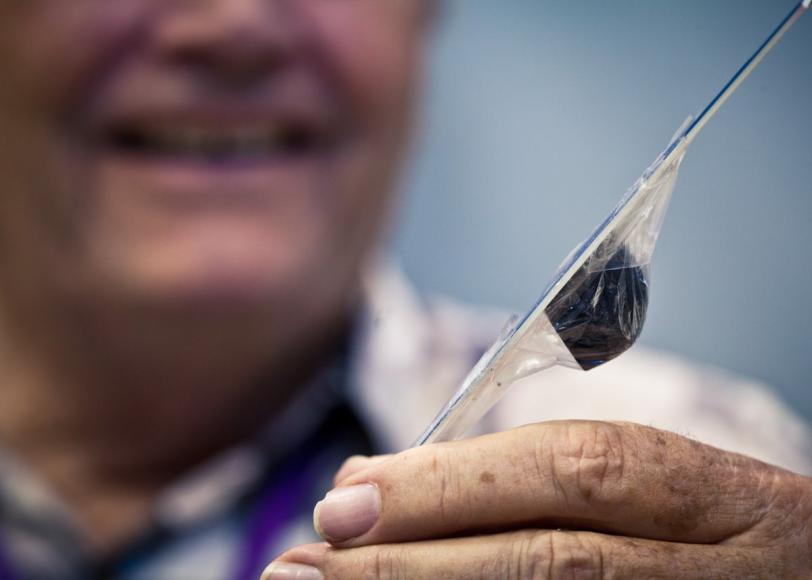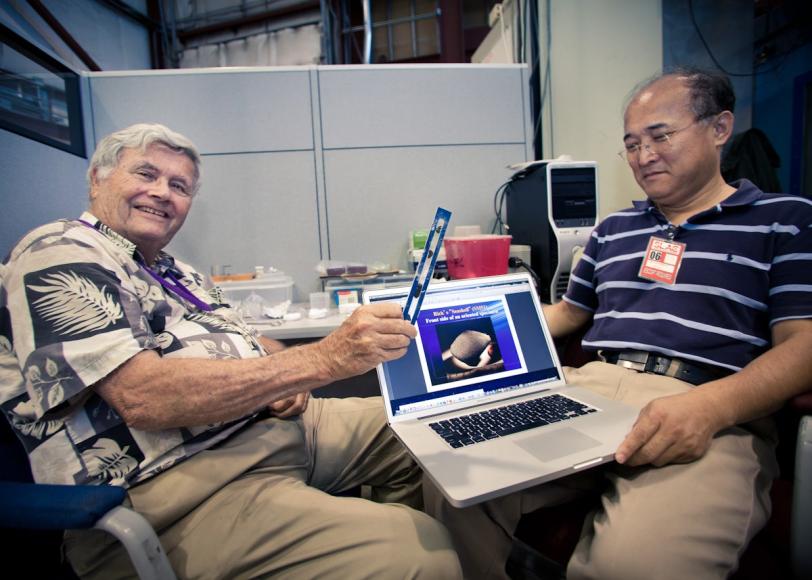User Spotlight: Studying Air, Artifacts, Meteorites and More at SSRL
Tom Cahill and his colleagues at the DELTA Group are frequent visitors to the Stanford Synchrotron Radiation Lightsource, where they use Beam Line 2-2 to help them determine detailed lists of the elements found in all sorts of unlikely samples.
By Lori Ann White
Tom Cahill and his colleagues at the DELTA Group are frequent visitors to the Stanford Synchrotron Radiation Lightsource, where they use Beam Line 2-2 to help them determine detailed lists of the elements found in all sorts of unlikely samples.
DELTA stands for Detection and Evaluation of Long-range Transport of Aerosols. And Cahill, who capped a long and distinguished career at the University of California-Davis by starting the group in 1997 – three years after he retired – regularly brings samples of particulates found in air from all over the world to test and characterize, which means come up with that list of elements.
But as he's gained more experience with SSRL and other synchrotron facilities, his appreciation has grown; and now he's an enthusiastic synchrotron booster, convincing other scientists to come to SSRL and making sure they leave with their own lists of ingredients. He assists in analyses of everything from ancient coins to a chunk of the meteorite that flashed across the Sierra Nevada sky in April (discussed below).
Cahill keeps such a busy schedule that it it's easy to see why his friends and collaborators say he has failed retirement.
How did you become such a fan of synchrotrons and SSRL?
TC: During the first Gulf War, when Iraq torched the Kuwaiti oil fields, we were asked to find out what was in all that black smoke. We didn't have the necessary sensitivity using the cyclotron at Davis, so in 1992 I did the first analysis at SSRL of smoke aerosols from Kuwait. And it worked! That's when I realized this stuff is intensely interesting – and understaffed.
In 1997, we formed the DELTA Group. Our main mission is to help reduce the uncertainty in global climate-change models with better information about concentrations of atmospheric aerosols as a function of size, time of day and composition. Climate-change modelers need to know this greater detail to be able to accurately model the aerosols' effects.
Could you define atmospheric aerosols for us?
Aerosols are tiny particles of stuff suspended in the air. And when it gets into the air, it travels. We can see the difference between dust that comes from China, 5,000 miles away, and from a highway 100 feet away. And did you know that some of the worst stuff we find in the air up to a mile away from that highway isn't car exhaust? It's very fine metal from brake pads and drums. We'd have never seen that without the capabilities of synchrotrons.
I take it you're a pretty regular user of SSRL.
TC: I have to admit, we started at Berkeley with the Advanced Light Source. But there we couldn't see the stuff that needs high energies – toxic metals, rare earths, heavy metals. We came to SSRL and found that Beam Line 2-2 was perfect. And this is a wonderful facility. You've made us feel very welcome.
Your research is somewhat of a family affair now, is that correct?
TC: My daughter Catherine is an associate professor at the University of Alaska at Fairbanks. She's brought air samples from Norway, Baghdad, Kandahar – the samples from Kandahar, by the way, were black as a hat and full of poisons.
Tom Jr. is an organic chemist and a troublemaker. [Cahill laughs.] He just got tenure at Arizona State and is working with me, too. My students are as good as or better than ever, and DELTA has nodes of people everywhere trained to get samples and send them back. We get samples from the most amazing places.
And I'm married to an environmental lawyer – my wife was a deputy attorney general for the state of California. She gave me a real appreciation for the fact the analyses we do are fast, accurate – and non-destructive. Any little speck of material used in legal matters is evidence, and you can't destroy evidence.
Speaking of non-destructive, tell us a little bit about how you've branched out beyond aerosols.
TC: I'm the one who knows how wonderful synchrotrons are, so I act as the interface between this place or ALS and people who don't. We've looked at the Dead Sea scrolls, ancient coins from Europe. Now Qing-zhu (Qing-zhu Yin, UC-Davis professor of geology) got his hands on a piece of that meteorite, and I'm helping him with the initial stage of research, which is to characterize its elemental makeup.
I don't know squat about meteorites. But the power of this technique is that you don't have to be smart – just careful. And I meet all these really intelligent people.
I love going to work in the morning.

(Photo by Brad Plummer)

(Photo by Brad Plummer)